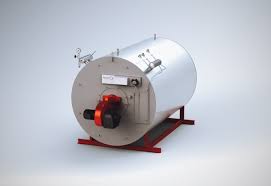
Oct . 20, 2024 16:29 Back to list
hot water boiler diagram
Understanding the Hot Water Boiler Diagram
Hot water boilers are essential components in various heating systems, providing warm water for residential and commercial spaces. Understanding a hot water boiler diagram can help users and technicians alike grasp how these systems operate and maintain efficiency. In the following discussion, we will explore the critical components typically found in hot water boiler diagrams, their functions, and the overall layout of a standard hot water boiler system.
Basic Components of a Hot Water Boiler
1. Boiler Body The boiler body is the main component where water is heated. It contains a heat exchanger, which transfers heat from the combustion process to the water circulating within the system. The heat exchanger may consist of tubes or plates that maximize the surface area for heat transfer.
2. Burner The burner is responsible for igniting the fuel—be it natural gas, propane, oil, or other materials—to generate heat. The burner directs flames into the heat exchanger, allowing the heat to be absorbed by water.
3. Pump The circulation pump plays a crucial role in moving hot water from the boiler to the heating system (radiators or underfloor heating) and returning cooler water back to the boiler for reheating. This efficient circulation is vital for maintaining consistent temperature control throughout the space.
4. Thermostat The thermostat monitors the temperature of the water and signals the boiler to turn on or off accordingly. This smart regulation helps maintain desired temperatures and improves energy efficiency.
5. Expansion Tank As water heats up, it expands. The expansion tank accommodates this increase in volume, preventing excessive pressure build-up in the system that could lead to leaks or even explosions.
6. Pressure Relief Valve This safety feature releases excess pressure within the boiler and the overall heating system. If the pressure exceeds safe limits, the valve opens to prevent potential failures.
hot water boiler diagram

7. Flue The flue is a vital component that vents gases produced during the combustion process safely outside the building. Proper venting ensures that harmful gases do not accumulate indoors, protecting occupants from health hazards.
The Heating Process
In a typical hot water boiler system, the process begins when the thermostat detects a drop in temperature and signals the boiler to ignite. The burner lights up, and the flames heat the water within the boiler body. As the water temperature rises, the circulation pump activates, moving the hot water through pipes to the designated heating areas.
The heated water flows through radiators or underfloor heating systems, where it radiates heat into the room. As the water releases its heat, it cools down and returns to the boiler via the return line. This water is then reheated in the boiler to maintain the cycle.
Maintenance and Safety Considerations
Regular maintenance of hot water boiler systems is crucial to ensure optimal performance and longevity. Technicians regularly check components like the burner, pump, and pressure relief valves for functionality. Additionally, they inspect the expansion tank, ensuring it has the right pre-charge level.
Users should also familiarize themselves with the boiler's safety features. Knowing where the pressure relief valve is located can be key during emergencies. If this valve opens frequently, it might indicate an underlying problem, such as excessive pressure or a failing expansion tank. In such cases, consulting a qualified technician is essential.
Conclusion
Understanding a hot water boiler diagram enhances users' knowledge about their heating systems, leading to better maintenance and troubleshooting practices. By familiarizing themselves with critical components, users can appreciate the intricate workings that keep their environments warm and comfortable. Regular inspections and a clear understanding of the system not only improve efficiency but also ensure safety in operation. In summary, a hot water boiler is a complex yet vital system, and understanding its diagram is the first step toward efficient usage and maintenance.
-
High-Efficiency Commercial Oil Fired Steam Boiler for Industry
NewsJul.30,2025
-
High-Efficiency Biomass Fired Thermal Oil Boiler Solutions
NewsJul.30,2025
-
High Efficiency Gas Fired Thermal Oil Boiler for Industrial Heating
NewsJul.29,2025
-
High-Efficiency Gas Fired Hot Water Boiler for Sale – Reliable & Affordable
NewsJul.29,2025
-
High Efficiency Biomass Fired Hot Water Boiler for Industrial and Commercial Use
NewsJul.29,2025
-
High-Efficiency Biomass Fired Hot Water Boiler for Industrial Use
NewsJul.28,2025
Related PRODUCTS






















